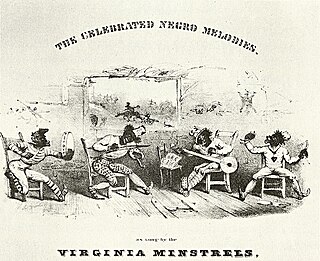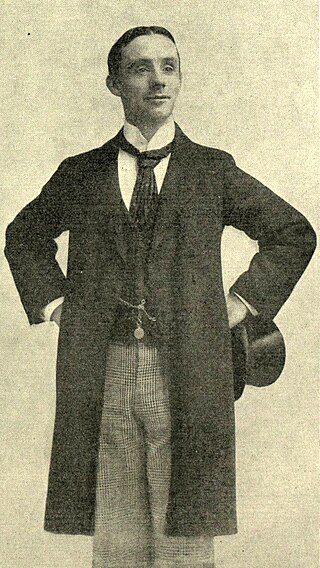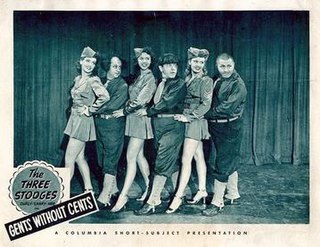
A clown is a person who performs comedy and arts in a state of open-mindedness using physical comedy, typically while wearing distinct makeup or costuming and reversing folkway-norms. Clowns have a varied tradition with significant variations in costume and performance. The most recognisable clowns are those that commonly perform in the circus, characterized by colorful wigs, red noses, and oversized shoes. However, clowns have also played roles in theater and folklore, like the court jesters of the Middle Ages and the jesters and ritual clowns of various indigenous cultures. Their performances can elicit a range of emotions, from humor and laughter to fear and discomfort, reflecting complex societal and psychological dimensions. Through the centuries, clowns have continued to play significant roles in society, evolving alongside changing cultural norms and artistic expressions.

Low comedy, also known as lowbrow humor, in association to comedy, is a dramatic or literary form of popular entertainment without any primary purpose other than to create laughter through boasting, boisterous jokes, drunkenness, scolding, fighting, buffoonery and other riotous activity. It is also characterized by "horseplay", slapstick or farce. Examples include the throwing of a custard pie into another's face. This definition has also expanded to include lewd types of comedy that rely on obvious physical jokes, such as, the wedgie.

A jester, court jester, fool or joker was a member of the household of a nobleman or a monarch employed to entertain guests during royal court. Jesters were also traveling performers who entertained common folk at fairs and town markets, and the discipline continues into the modern day, where jesters perform at historical-themed events.

William Kempe, commonly referred to as Will Kemp, was an English actor and dancer specialising in comic roles and best known for having been one of the original stage actors in early dramas by William Shakespeare. Roles associated with his name may include the great comic creation Falstaff and his contemporaries considered him the successor to the great clown of the previous generation, Richard Tarlton.

Harlequinade is an English comic theatrical genre, defined by the Oxford English Dictionary as "that part of a pantomime in which the harlequin and clown play the principal parts". It developed in England between the 17th and mid-19th centuries. It was originally a slapstick adaptation or variant of the commedia dell'arte, which originated in Italy and reached its apogee there in the 16th and 17th centuries. The story of the Harlequinade revolves around a comic incident in the lives of its five main characters: Harlequin, who loves Columbine; Columbine's greedy and foolish father Pantaloon, who tries to separate the lovers in league with the mischievous Clown; and the servant, Pierrot, usually involving chaotic chase scenes with a bumbling policeman.

The minstrel show, also called minstrelsy, was an American form of theater developed in the early 19th century. The shows were performed by mostly white actors wearing blackface makeup for the purpose of comically portraying racial stereotypes of African Americans. There were also some African-American performers and black-only minstrel groups that formed and toured. Minstrel shows stereotyped blacks as dimwitted, lazy, buffoonish, cowardly, superstitious, and happy-go-lucky. Each show consisted of comic skits, variety acts, dancing, and music performances that depicted people specifically of African descent.

Robert Armin was an English actor, and member of the Lord Chamberlain's Men. He became the leading comedy actor with the troupe associated with William Shakespeare following the departure of Will Kempe around 1600. Also a popular comic author, he wrote a comedy, The History of the Two Maids of More-clacke, as well as Foole upon Foole, A Nest of Ninnies (1608) and The Italian Taylor and his Boy.

Scottish folk music is a genre of folk music that uses forms that are identified as part of the Scottish musical tradition. There is evidence that there was a flourishing culture of popular music in Scotland during the late Middle Ages, but the only song with a melody to survive from this period is the "Pleugh Song". After the Reformation, the secular popular tradition of music continued, despite attempts by the Kirk, particularly in the Lowlands, to suppress dancing and events like penny weddings. The first clear reference to the use of the Highland bagpipes mentions their use at the Battle of Pinkie Cleugh in 1547. The Highlands in the early seventeenth century saw the development of piping families including the MacCrimmons, MacArthurs, MacGregors and the Mackays of Gairloch. There is also evidence of adoption of the fiddle in the Highlands. Well-known musicians included the fiddler Pattie Birnie and the piper Habbie Simpson. This tradition continued into the nineteenth century, with major figures such as the fiddlers Niel and his son Nathaniel Gow. There is evidence of ballads from this period. Some may date back to the late Medieval era and deal with events and people that can be traced back as far as the thirteenth century. They remained an oral tradition until they were collected as folk songs in the eighteenth century.

George Wild Galvin, better known by the stage name Dan Leno, was a leading English music hall comedian and musical theatre actor during the late Victorian era. He was best known, aside from his music hall act, for his dame roles in the annual pantomimes that were popular at London's Theatre Royal, Drury Lane, from 1888 to 1904.

Circus clowns are a sub-genre of clowns. They typically perform at circuses and are meant to amuse, entertain and make guests laugh.

Pantomime is a type of musical comedy stage production designed for family entertainment. It was developed in England and is performed throughout the United Kingdom, Ireland and in other English-speaking countries, especially during the Christmas and New Year season. Modern pantomime includes songs, gags, slapstick comedy and dancing. It generally combines gender-crossing actors and topical humour with a story more or less based on a well-known fairy tale, fable or folk tale. Pantomime is a participatory form of theatre, in which the audience is encouraged and expected to sing along with certain parts of the music and shout out phrases to the performers.
Clown society is a term used in anthropology and sociology for an organization of comedic entertainers who have a formalized role in a culture or society.
William Hooper Frank John Dainty was a British comedian, dancer, physical comedian and pantomime and television star.

The Shakespearean fool is a recurring character type in the works of William Shakespeare.

Ella Shields was a music hall singer and male-impersonator. Her famous signature song, "Burlington Bertie from Bow", a parody of Vesta Tilley's "Burlington Bertie", written by her third husband, William Hargreaves, was an immediate hit. Though American-born, Shields achieved her greatest success in England.
"Top Hat, White Tie and Tails" is a popular song written by Irving Berlin for the 1935 film Top Hat, where it was introduced by Fred Astaire.

Gents Without Cents is a 1944 short subject directed by Jules White and starring American slapstick comedy team The Three Stooges. It is the 81st entry in the series released by Columbia Pictures starring the comedians, who released 190 shorts for the studio between 1934 and 1959.

In theatres, beginning in Elizabethan London, a jig was a short comic drama that immediately followed a full-length play. This phenomenon added an additional comic or light-hearted offering at the end of a performance. A jig might include songs sung to popular tunes of the day, and it might feature dance, stage fighting, cross-dressing, disguisings, asides, masks, and elements of pantomime.

Nellie Wallace was a British music hall star, actress, comedienne, dancer and songwriter who became one of the most famous and best loved music hall performers. She became known as "The Essence of Eccentricity". She dressed in ultra-tight skirts — so tight in fact, that she would lie down on the stage and shuffle back and forth on her back to pick up whatever she had contrived to drop. Her hat sported a lone daisy, feather, or fish bone, and once even a lit candle — supposedly, so she could see where she was going and where she had been.
















